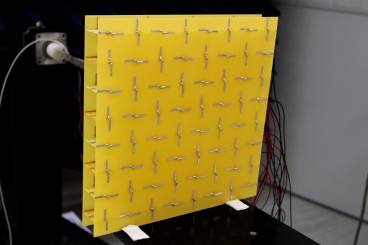A collaborative initiative between researchers from MIT, the University of Texas at Austin and Zhejiang University in China has yielded a new metamaterial that is capable of channeling photons in one direction.
 New Metamaterial to prevent backward reflection of light(Credit: Zheng Wang)
New Metamaterial to prevent backward reflection of light(Credit: Zheng Wang)
This development has great significance for communication using light wherein light moving through a waveguide has a tendency to reflect backward and consequently interfere with oncoming transmissions. Adapting the new metamaterial to chip scale could yield faster and energy-efficient computer chips employing light for data transmission.
Current optical networks employ a device called an isolator to prevent the backward reflection of light. Isolators come with their own set of challenges because they are made of exotic materials such as yttrium indium garnet and are bulky as they operate only under the presence of a magnetic field. The main disadvantage to isolators is that their ability to absorb photons not only prevents backward scattering but also hinders forward movement of light, thereby diminishing signal strength.
Though the prototype of the new metamaterial is huge, it can operate sans magnetic field and hence could be adapted to small optical devices. The materials used are not exotic. Light energy is not lost as the metamaterial addresses backward scattering by channeling the photons rather than absorbing them. The ability to channel or herd light is due to the presence of rows of embedded antennae with alternating vertical and horizontal orientations. The direction of light propagation is determined by the direction of current flow through the antennae. The antennae can be embedded in silicon to adapt them to chips. The challenge is in making the metamaterial work at frequencies of visible light and near-infra red.